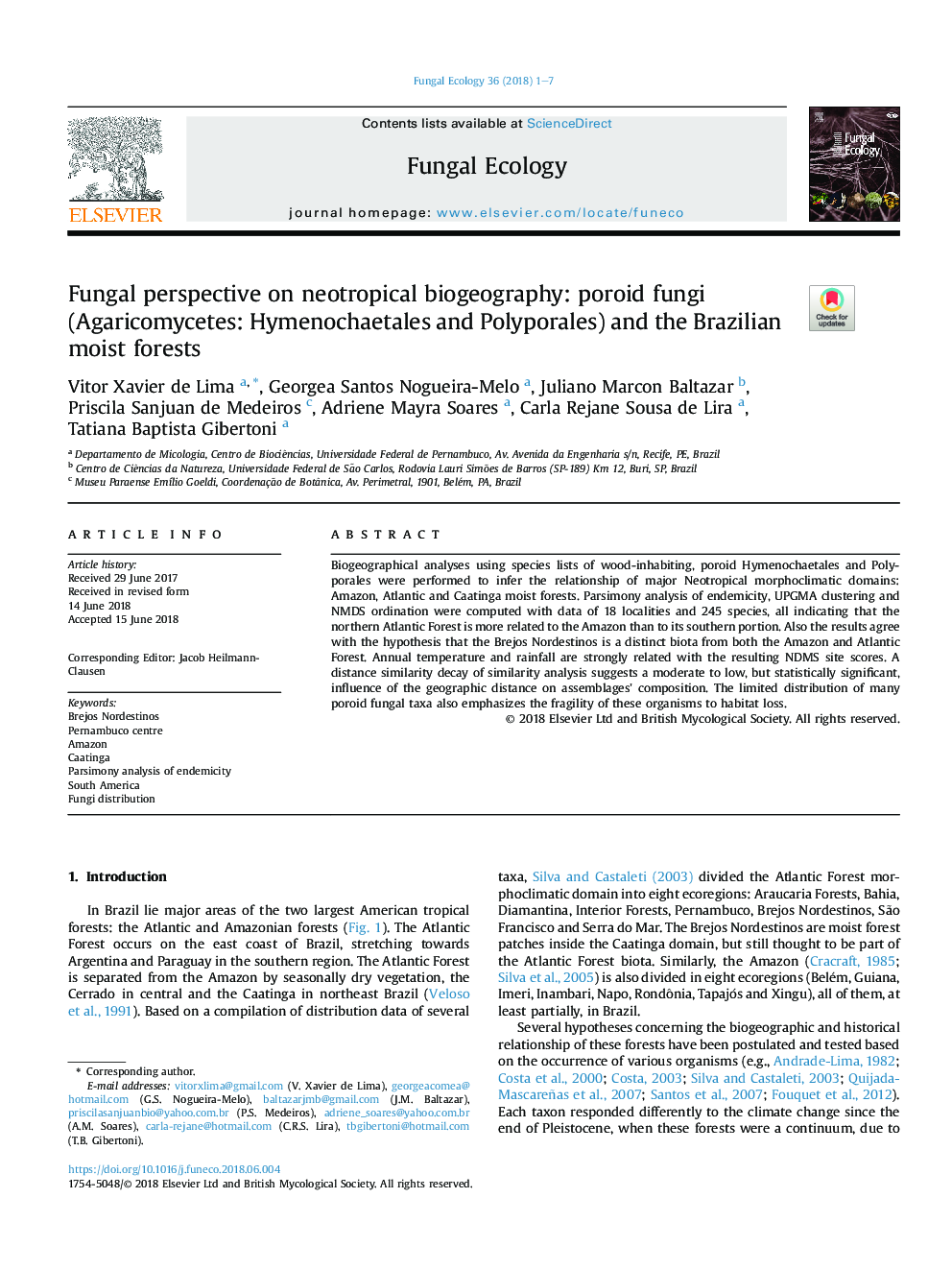| Article ID | Journal | Published Year | Pages | File Type |
|---|---|---|---|---|
| 8956103 | Fungal Ecology | 2018 | 7 Pages |
Abstract
Biogeographical analyses using species lists of wood-inhabiting, poroid Hymenochaetales and Polyporales were performed to infer the relationship of major Neotropical morphoclimatic domains: Amazon, Atlantic and Caatinga moist forests. Parsimony analysis of endemicity, UPGMA clustering and NMDS ordination were computed with data of 18 localities and 245 species, all indicating that the northern Atlantic Forest is more related to the Amazon than to its southern portion. Also the results agree with the hypothesis that the Brejos Nordestinos is a distinct biota from both the Amazon and Atlantic Forest. Annual temperature and rainfall are strongly related with the resulting NDMS site scores. A distance similarity decay of similarity analysis suggests a moderate to low, but statistically significant, influence of the geographic distance on assemblages' composition. The limited distribution of many poroid fungal taxa also emphasizes the fragility of these organisms to habitat loss.
Related Topics
Life Sciences
Agricultural and Biological Sciences
Ecology, Evolution, Behavior and Systematics
Authors
Vitor Xavier de Lima, Georgea Santos Nogueira-Melo, Juliano Marcon Baltazar, Priscila Sanjuan de Medeiros, Adriene Mayra Soares, Carla Rejane Sousa de Lira, Tatiana Baptista Gibertoni,
